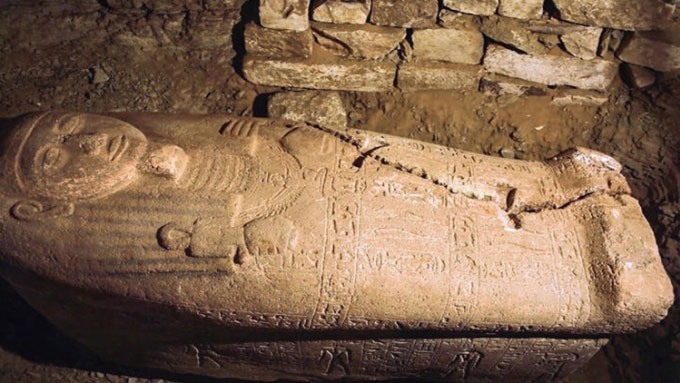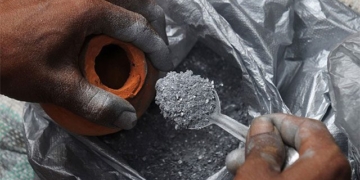Archaeologists from Cairo University have discovered the coffin of a high-ranking official from the time of Pharaoh Ramses II at the Saqqara necropolis.

The coffin of Ptah-em-uya dates back approximately 3,200 years. (Photo: Egyptian Antiquities Ministry)
In a report on September 19, the Egyptian Antiquities Ministry announced that the coffin, made of red granite, belonged to royal official Ptah-em-uya during the reign of Pharaoh Ramses II, who ruled Egypt in the 13th century BC. This discovery is the latest in a series of remarkable findings at the Saqqara site in present-day Giza.
According to Mostafa Waziri, Secretary-General of the Supreme Council of Antiquities of Egypt, Ptah-em-uya served as the royal secretary and treasurer at the Ramasseum temple. He was also responsible for the rituals honoring all the gods of Upper and Lower Egypt. Ptah-em-uya’s tomb was first excavated last year.
The coffin discovered in this excavation features numerous engravings symbolizing the sons of the god Horus, along with inscriptions intended to “protect the deceased.”
The Saqqara site was once a vast burial ground in the ancient Egyptian capital of Memphis, home to over a dozen pyramids, an animal burial ground, and Coptic Christian monasteries that still exist today, recognized by UNESCO as a World Heritage site.
Recently, Egypt announced a collection of 150 bronze statues in May, five ancient tombs in March, and over 50 wooden coffins last year, dating back to the New Kingdom of Egypt, which ended in the 11th century BC.
These astonishing discoveries are a crucial part of efforts to revive Egypt’s vital tourism industry. The country also plans to open the “largest archaeological museum in the world” at the foot of the pyramids this year.


















































